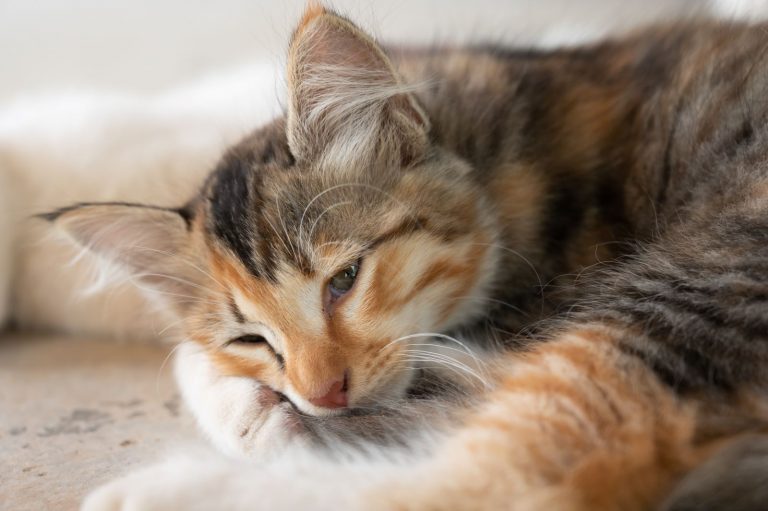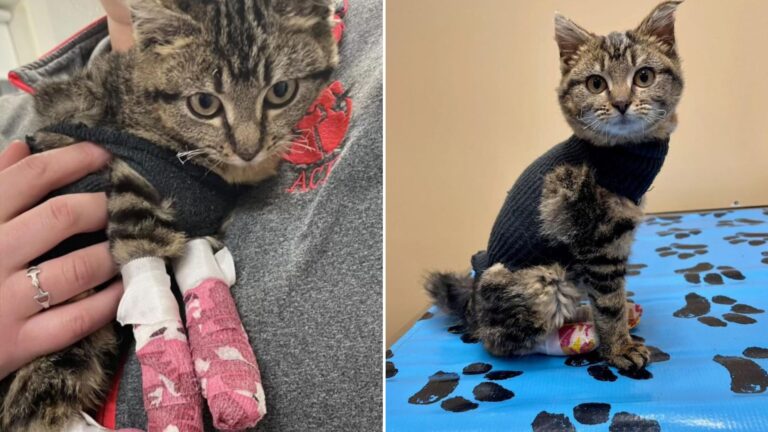17 Clear Signs Your Cat May Be Traumatized And How To Help Them Heal
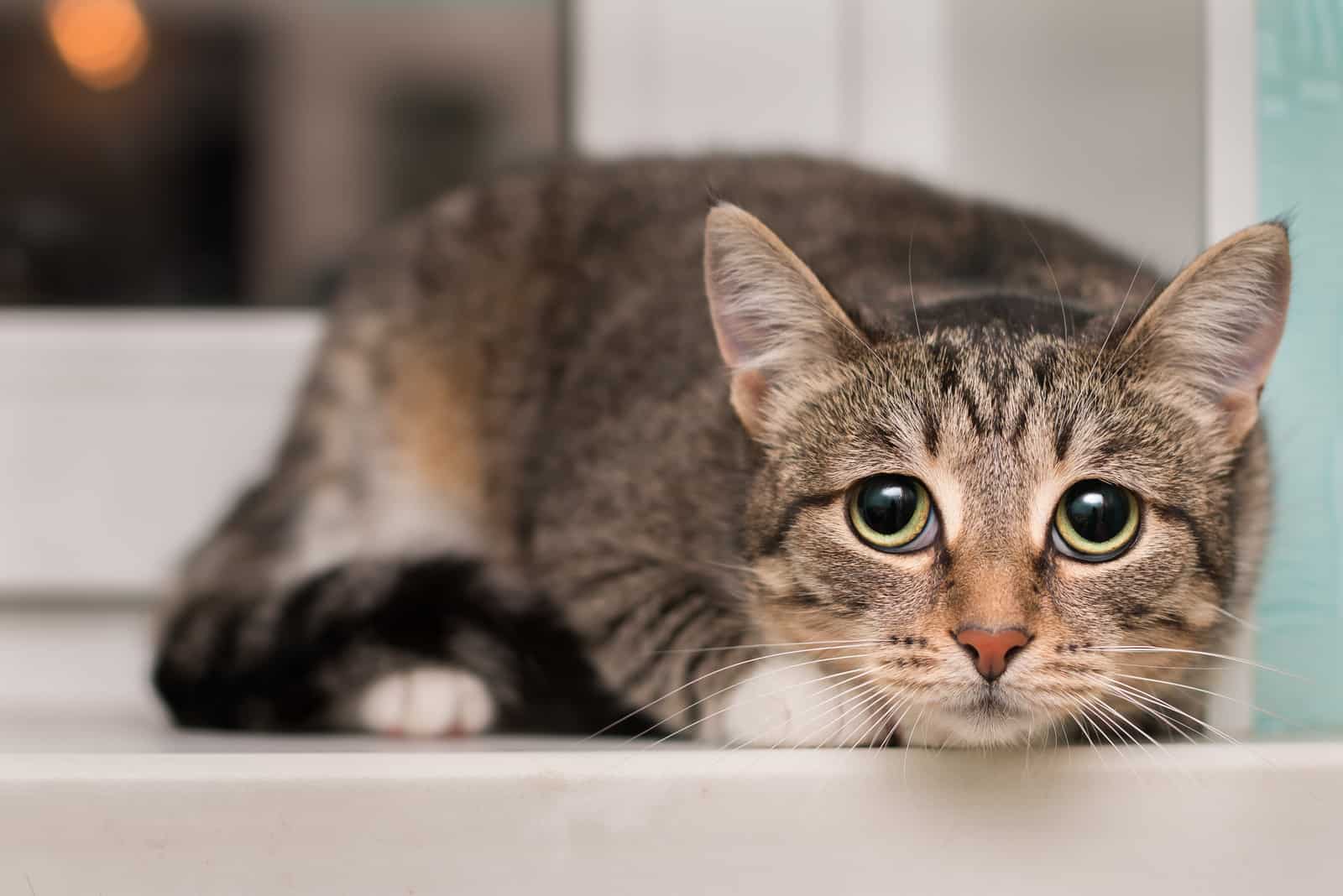
Just like humans, cats can experience trauma from events such as abuse, catfights, or attacks, which can lead to emotional trauma, PTSD, anxiety, and even depression.
This can create challenges for both the cat and its owner.
While humans can express their feelings, talk about them, explain the situation, find strategies to work through it, or seek help, cats rely on body language and behavior to communicate their distress.
If you suspect your cat is dealing with trauma, this guide will help you identify the signs and symptoms.
1. Signs Of Aggressive Behavior

Aggressive behavior is one of the most recognizable symptoms of a traumatized cat and can be deeply rooted in their past experiences.
Cats that have lived in abusive or threatening environments often develop aggression as a defensive mechanism, using it to protect themselves from perceived threats, whether from other animals or humans.
This reaction stems from a survival instinct, as they’ve learned to associate aggression with safety in the face of danger.
Aggression may also be seen in cats who weren’t properly socialized during their early development. Without adequate exposure to humans and other animals as kittens, these cats may struggle to trust their surroundings.
That’s why they may react with hostility even in safe environments. They might misinterpret friendly gestures as threats, leading to defensive or outright aggressive behavior.
Furthermore, external triggers, such as loud noises or the presence of spayed cats in the neighborhood, can exacerbate their aggressive tendencies.
For example, hearing unfamiliar cats making loud noises may remind them of past altercations or perceived territorial challenges, leading to heightened aggression.
Understanding this behavior is crucial for helping your cat feel secure. Creating a calm, stable environment and seeking advice from a veterinarian or animal behaviorist can go a long way in addressing aggression and promoting trust.
2. My Cat Trembles Most Of The Time
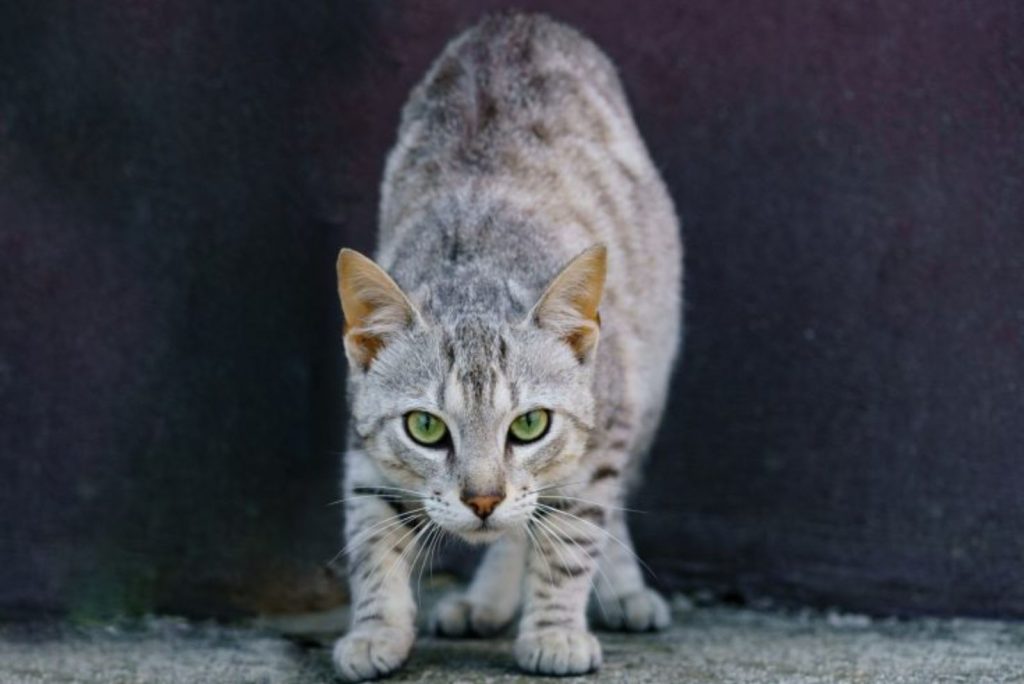
It’s not very common to see a cat trembling frequently, as cats are generally calm, independent creatures that exude confidence in their ability to defend themselves.
However, this doesn’t mean that they are immune to fear. Trembling can be a significant indicator that your cat is experiencing anxiety or recalling a past traumatic event.
For example, you might notice your cat trembling when exposed to environments or situations that remind her of something distressing. Loud noises could be triggers if your cat has previously been involved in a car accident or frightened by some loud event.
In these cases, trembling becomes her way of expressing the fear she cannot otherwise communicate.
Understanding the root cause of your cat’s trembling is key to helping her overcome it. Observe her closely to identify the specific triggers, and work to create a secure, calm environment that minimizes her exposure to them.
For instance, relocating her to a quieter area of your home, away from disruptive noises, might provide the comfort she needs. Surrounding her with familiar and soothing items, such as her favorite bed or toys, can also help reduce her anxiety.
If avoiding these triggers doesn’t seem to alleviate her trembling, it’s essential to seek professional guidance.
3. Fear Of Being Alone

If you notice excessive vocalization or see that your cat gets nervous when you’re leaving her, it means that she suffers from separation anxiety.
Maybe in the past, she was often left alone for a long period of time without food or water which led to trauma. Or perhaps she was frightened by thunder or something similar, and there was no one there to reassure her.
However, there are a few things you can do to prevent this. First, only leave your cat for longer periods when it’s really necessary. Then, make sure you leave your cat in a quiet, safe space. Also, you can provide her with lots of interesting toys that will occupy her attention.
You can also add cat trees and cat beds in the room so that she has a warm and comfortable place to sleep. Most importantly, provide your cat with enough food and water, as well as a clean litter box, until you come back. This might help your cat stay calm until you get back home.
4. Sudden Changes In Temperament
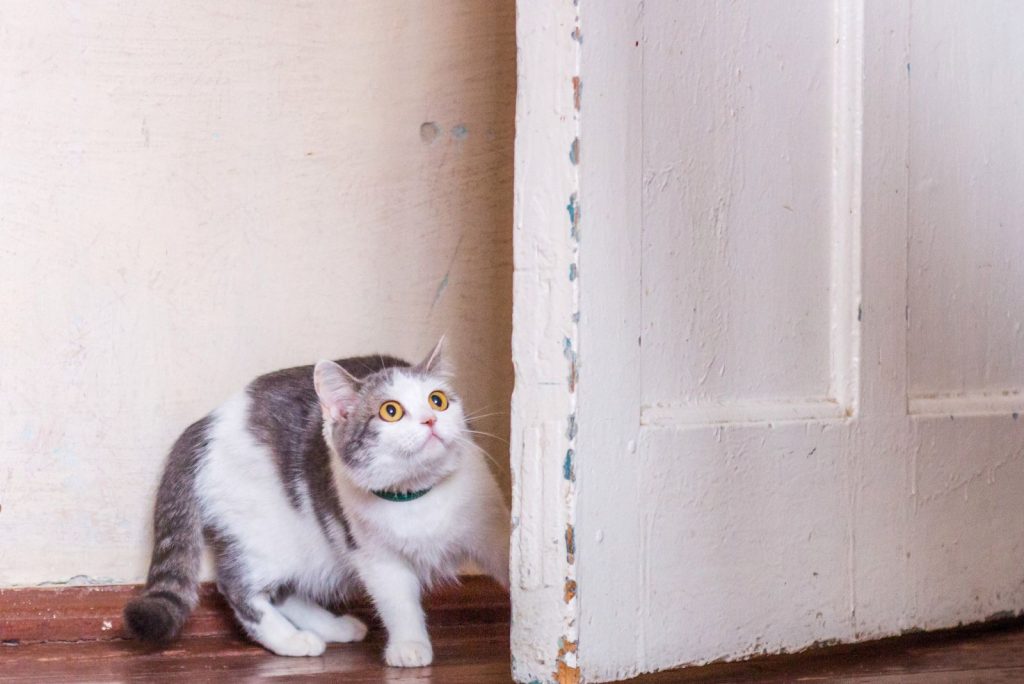
A sudden change in behavior is one of the most telling symptoms of a traumatized cat. If your cat approaches you for attention – rubbing against you or seeking to be petted – and then suddenly reacts aggressively, it’s a clear signal that something is wrong.
This shift from being a sweet, affectionate companion to lashing out without apparent reason often points to underlying emotional distress.
This kind of erratic behavior is especially concerning because it contradicts the cat’s initial intention to seek comfort. If she approached you willingly, there should be no reason for an aggressive response – unless her reaction is rooted in past trauma.
Cats who have experienced rough handling, such as excessive or forceful petting, or even physical harm, may develop an instinctive fear response. Over time, this fear can manifest as sudden aggression, even in situations where they should feel safe.
To help your cat, it’s essential to approach her with understanding and patience. Avoid making abrupt movements or forcing interaction when she shows signs of distress.
Instead, allow her to dictate the pace of your interactions, offering gentle, soothing attention when she feels comfortable.
However, addressing the underlying issue often requires professional assistance. A veterinarian or an animal behaviorist can help determine the exact cause of her behavioral changes and provide guidance on how to manage and reduce her stress.
5. Loss Of Appetite

Loss of appetite in cats can often be linked to stress or mental health struggles brought on by a traumatic experience. While cats are known for their picky eating habits, a sudden or prolonged refusal to eat is something to take seriously.
If your cat isn’t eating properly, it can quickly lead to weight loss, which, if left unaddressed, might result in severe health complications.
When under stress, cats may become selective, refusing their usual meals and eating only small amounts of treats to sustain themselves. In some extreme cases, a traumatized cat might stop eating altogether, risking starvation.
A lack of appetite often extends to drinking habits as well, leaving your cat dehydrated, which compounds the danger to her health.
The key to helping a cat in this state is to take action promptly. Here are some practical steps to encourage your cat to start eating again:
• Serve your cat warm, delicious, and nutrient-rich food.
• You can mix cat food with different supplements in order to reduce stress.
• Make sure that her water is always fresh and clean.
If these steps don’t help or if your cat’s condition worsens, consult with a veterinarian immediately. They can rule out any underlying health issues and provide tailored advice to help your cat regain her appetite and overall well-being.
6. Weight Loss

Weight loss is another sign of trauma in cats, often occurring as a result of a loss of appetite. If your cat stops eating as she normally does, it’s crucial to act quickly to prevent her from losing weight, as it can have serious implications for her health.
When a cat begins to shed pounds rapidly, her body may start to break down fat reserves for energy, which can overwhelm her liver and lead to conditions like hepatic lipidosis, a life-threatening liver disease.
Left untreated, this can escalate into more severe complications, making it even more vital to address the issue early.
Pay close attention to any changes in your cat’s eating habits, as catching the problem early gives you a better chance of reversing weight loss before it causes long-term damage.
If you notice your cat losing weight despite your best efforts to encourage her to eat, seek veterinary help as soon as possible.
A vet can evaluate her condition, identify the underlying cause, and provide the necessary treatments to get her back on the path to health.
7. No Interest In Play

If your cat seems less playful than usual or avoids interacting with you as much as she used to, it might be a sign that something is wrong.
Cats often express emotional or physical distress through subtle changes in their behavior, so it’s important to take note of these shifts and consider them seriously.
Start by observing your cat’s overall behavior carefully. Are there other changes, like eating less, hiding more often, or grooming excessively? If so, these could be additional indicators that something is amiss, and it’s time to take action.
Before jumping to conclusions, try engaging your cat with stimulating activities. Provide her with new, interesting toys to pique her curiosity, or dedicate more time to bonding through play and affection. Sometimes, a little extra attention can make a world of difference.
If your efforts don’t seem to help and your cat’s behavior remains the same or worsens, it’s best to seek advice from an expert. A vet or animal behaviorist can help determine the underlying issue and guide you toward the right solutions to help your cat feel better.
8. Need For An Affection
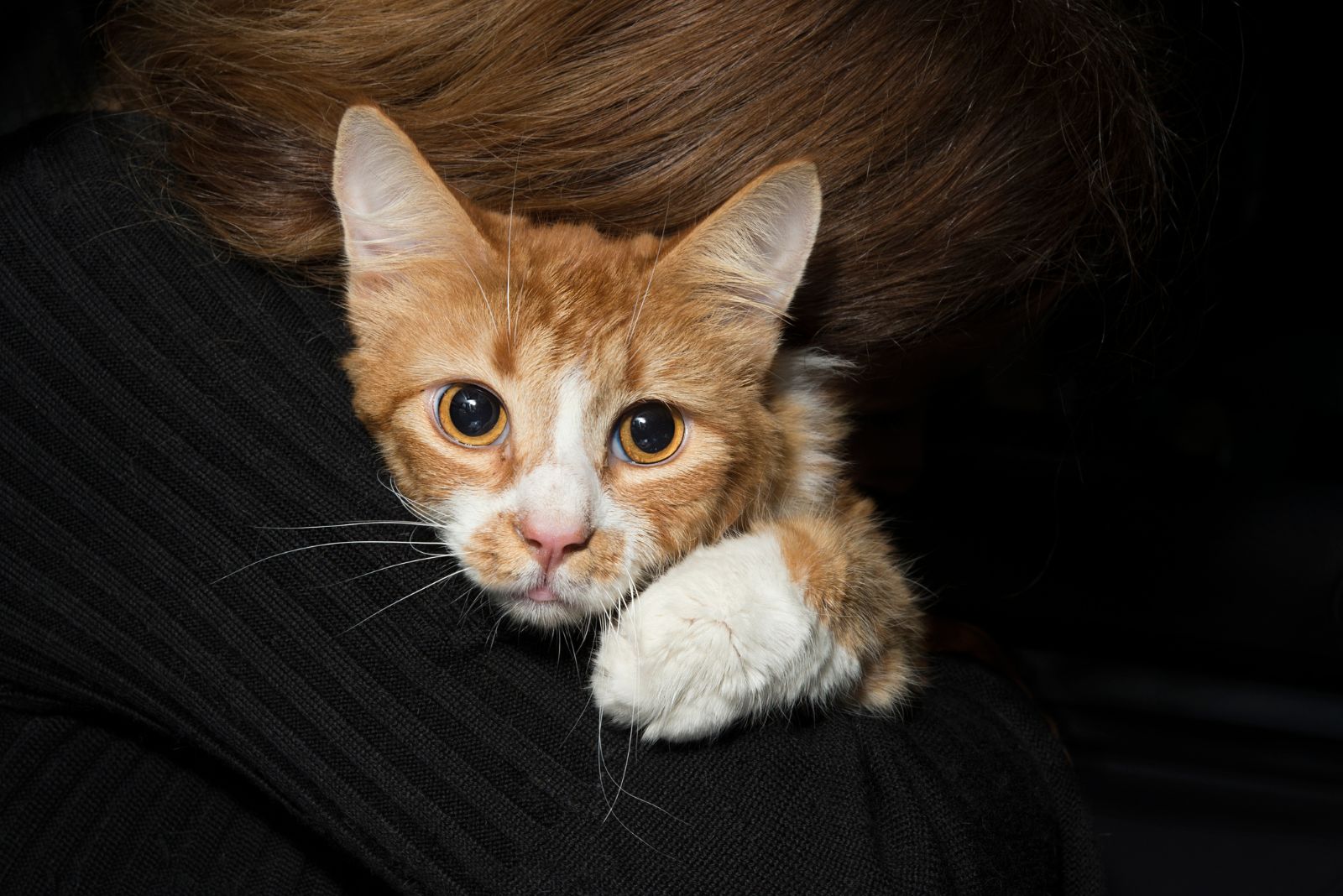
A cat’s trauma can manifest in a variety of ways, and while some cats may lose interest in playing or become withdrawn, others might go to the opposite extreme and become unusually needy for affection.
A clingy cat who follows you everywhere and refuses to leave your side could be seeking comfort and protection, driven by a deep fear of experiencing another traumatic event.
This behavior is your cat’s way of showing vulnerability and asking for reassurance. If you notice your furry friend acting this way, it’s important not to overlook or dismiss it. Your response can have a significant impact on her emotional well-being.
Start by creating a safe, nurturing environment where your cat feels secure. You can reassure her through gentle petting, soft-spoken words, or offering her favorite treats.
Spending more time together in a calm setting can help build her trust and provide the comfort she’s seeking.
Remember, a cat’s clinginess is a sign of her emotional needs. By showing patience and offering consistent support, you can help her regain her confidence and sense of security.
9. Excessive Meowing

Excessive and loud meowing is another common symptom of a traumatized cat. This kind of vocalization can signal many different things, but it often means your cat doesn’t feel safe or secure in her environment.
She may be meowing because she’s feeling anxious or fearful, especially if she’s in an unfamiliar place or situation.
If you’ve recently moved, brought in new family members, or introduced other changes, your cat might be meowing out of confusion or stress. She may not recognize her surroundings or the people around her, which makes her feel vulnerable and unsure.
In this state, your cat might also be calling out to you because she’s seeking reassurance, trying to confirm that you’re still there for her.
When you hear your cat meowing like this, it’s important to respond with patience and care. Gently comfort her and help her adjust by offering a quiet, familiar space where she can feel safe.
Providing her with a cozy bed, familiar scents, and your attention will help her feel more at ease and reduce stress. Over time, with consistent reassurance, she’ll begin to regain confidence and settle into the new environment.
10. Increased Escaping
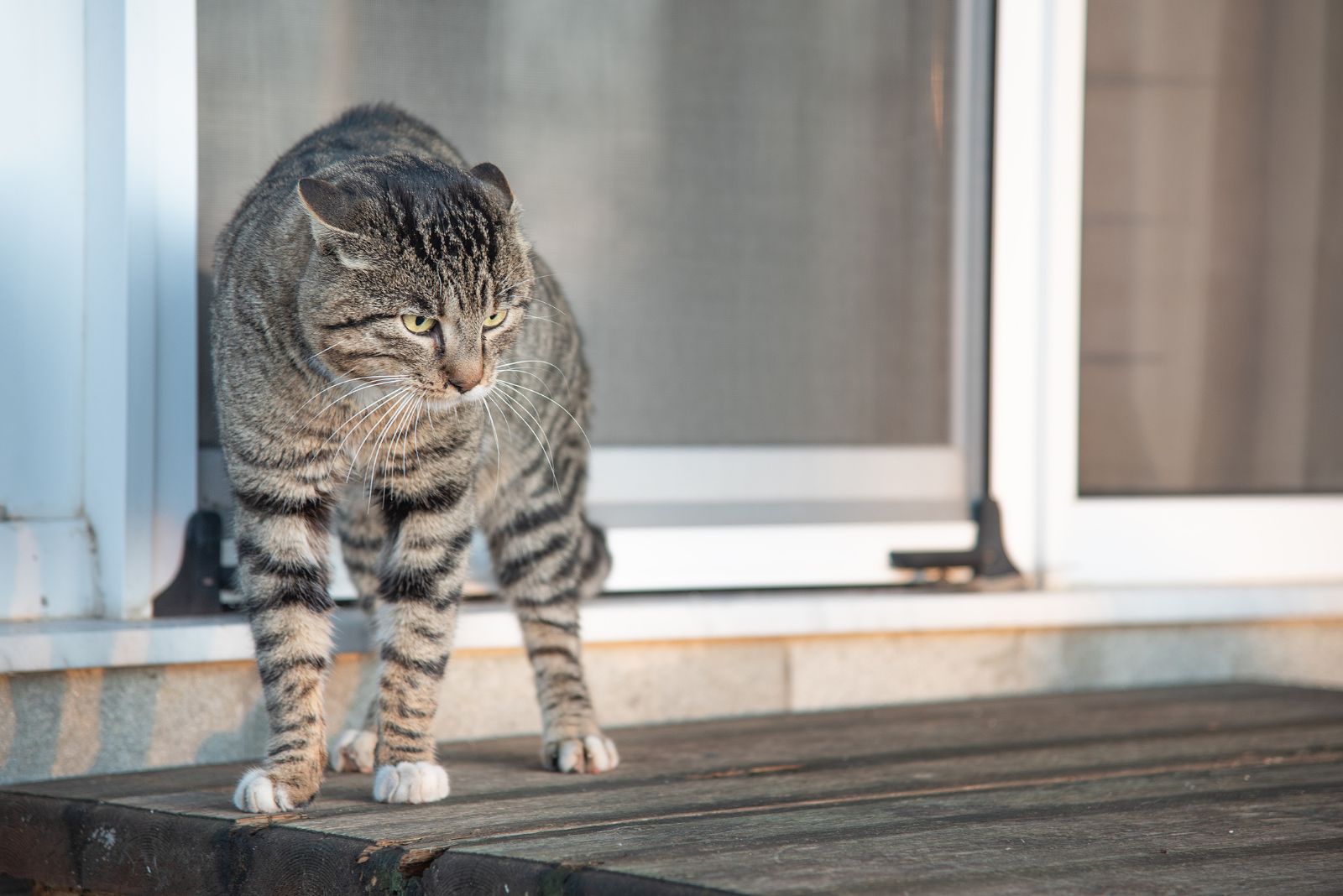
Traumatized cats often feel the urge to escape, and it’s crucial to understand why. Their instinct is to avoid experiencing traumatic events again, which can make them feel desperate to get away from the source of their fear.
This escape behavior can manifest in different ways, and it’s not just about trying to get outside to the backyard. In some cases, your cat may try to run as far away as possible, seeking safety wherever she can find it.
To help her feel secure, it’s important to provide a designated safe space to retreat when she feels scared or overwhelmed. This could be a secluded area in your home with familiar bedding or a cozy hideaway that gives her the privacy and security she needs.
By offering her a place to hide when necessary, you’ll help reduce her stress and give her the comfort she needs to heal. Always remember to keep windows, doors, and other exits secure to prevent her from escaping further than intended.
11. Increased Hiding
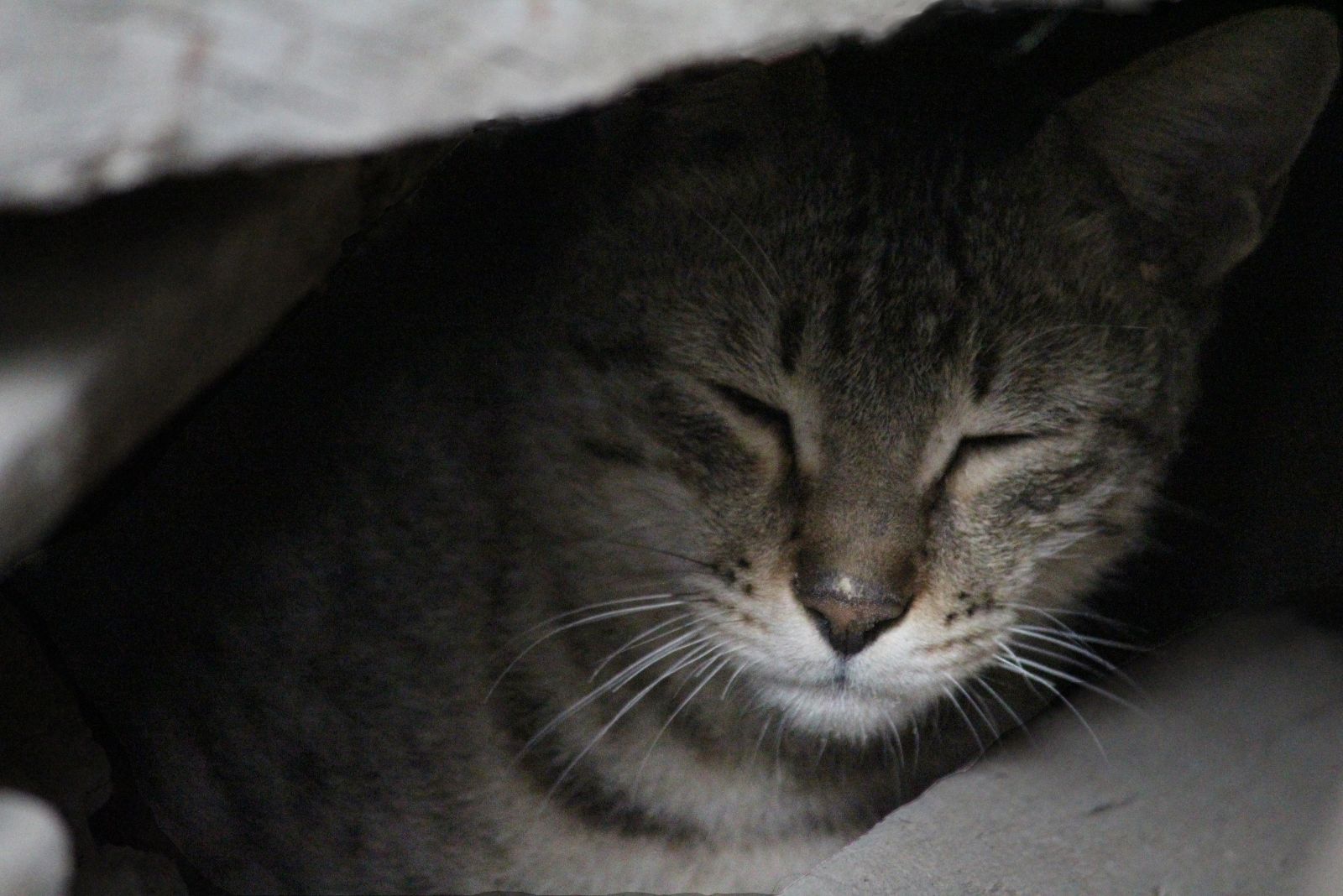
Besides trying to escape, a traumatized cat may also have the instinct to hide, sometimes in places where you may not even think to look.
This hiding behavior could be triggered by an underlying sense of danger, whether it’s from you, unfamiliar people like guests, or anything else she perceives as a threat. Cats have an incredible ability to sense things that we might not pick up on right away.
I once had an experience with my own cat that really made me realize this. She was lying peacefully in her bed one moment, but then, out of nowhere, she suddenly started running frantically around the house.
A few minutes later, she darted off and hid somewhere I couldn’t find her. It wasn’t until later that I learned an earthquake had occurred shortly after her frantic behavior.
It became clear to me that she was reacting to the stress of sensing something dangerous long before I even noticed. Her instinct to protect herself and hide from the danger was a natural response.
It’s moments like this that remind me how in tune animals are with their surroundings – and just how much we may miss if we don’t pay attention. Fortunately, I didn’t realize what was going on at the time, or I might have started to panic myself!
12. Destructive Behavior Problems
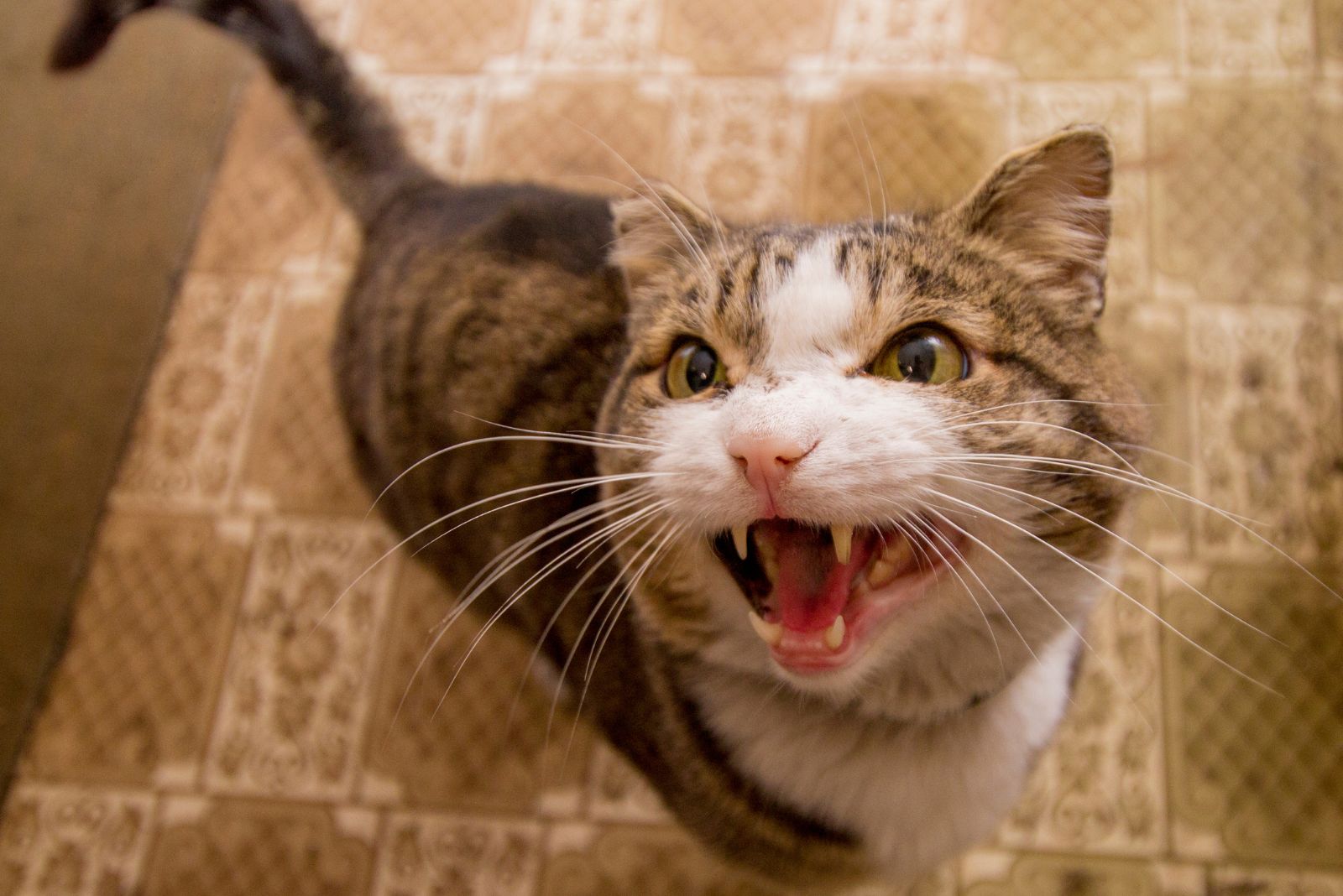
If you think only a dog can turn your house into a mess, think again! Destructive behavior is actually one of the key signs that a cat is suffering from trauma.
These behaviors can vary, but typically include things like:
• Scratching up the furniture
• Ruining curtains
• Chewing on plants
• Digging in the plants or litter box
The root cause of this destructive behavior is often separation anxiety. When you leave your cat alone, she doesn’t know when you’ll be back, which can be incredibly stressful for her.
This anxiety is even more intense if she has been abandoned before, making her fear that history might repeat itself.
To help ease this anxiety and reduce destructive behavior, make sure to provide your cat with plenty of stimulating toys and scratching posts to keep her entertained while you’re away.
If your cat is social and friendly, consider bringing in another pet to keep her company—just make sure to introduce them slowly and carefully. This can help ease her fear of being alone and offer her some much-needed comfort.
13. Inappropriate Urination And Defecation

Inappropriate urination and defecation can also be clear signs of trauma in a cat. There are cases where a cat has been using the litter box properly for a long time, only to suddenly stop.
This sudden change in behavior could mean that your cat had a bad experience while using the litter box in the past, and now she is avoiding it to prevent a repeat of that traumatic event.
It’s important to understand that a traumatized cat may begin urinating or defecating around your home for a reason. When cats urinate, they release pheromones that help them mark their territory.
This behavior is instinctive, and it helps your cat feel safer by establishing her space. It also sends a clear signal to other cats that this area belongs to her.
If you notice this behavior, it’s essential to look for any potential causes of stress or trauma in your cat’s environment and make adjustments to help her feel more secure.
14. Sleeping Disturbance

A sleep disturbance is one of the most common symptoms of PTSD in a cat. When a cat experiences trauma, it may struggle to sleep properly, or at all.
The distress from reliving the traumatic event can prevent her from relaxing, as she remains alert, constantly on edge, ready to flee or defend herself if needed. This ongoing state of anxiety can significantly affect her overall well-being.
However, before assuming that sleep disturbances are trauma-related, it’s crucial to rule out any underlying health issues that could be contributing to her inability to sleep. Make sure there are no physical health problems impacting her rest.
To help your cat relax, always provide a quiet and safe environment. Place familiar items around her, such as her favorite toys or a cozy blanket, and ensure she has a warm, comfortable bed.
This can help her feel more secure and encourage better sleep. If her sleep troubles persist or worsen, it may be time to consult with an expert to get to the root cause of the issue.
Keep an eye on her body language, too, so you can act quickly if any signs of poor health arise. Your cat’s well-being depends on both physical and emotional care.
15. Avoiding Things Associated With Traumatic Events
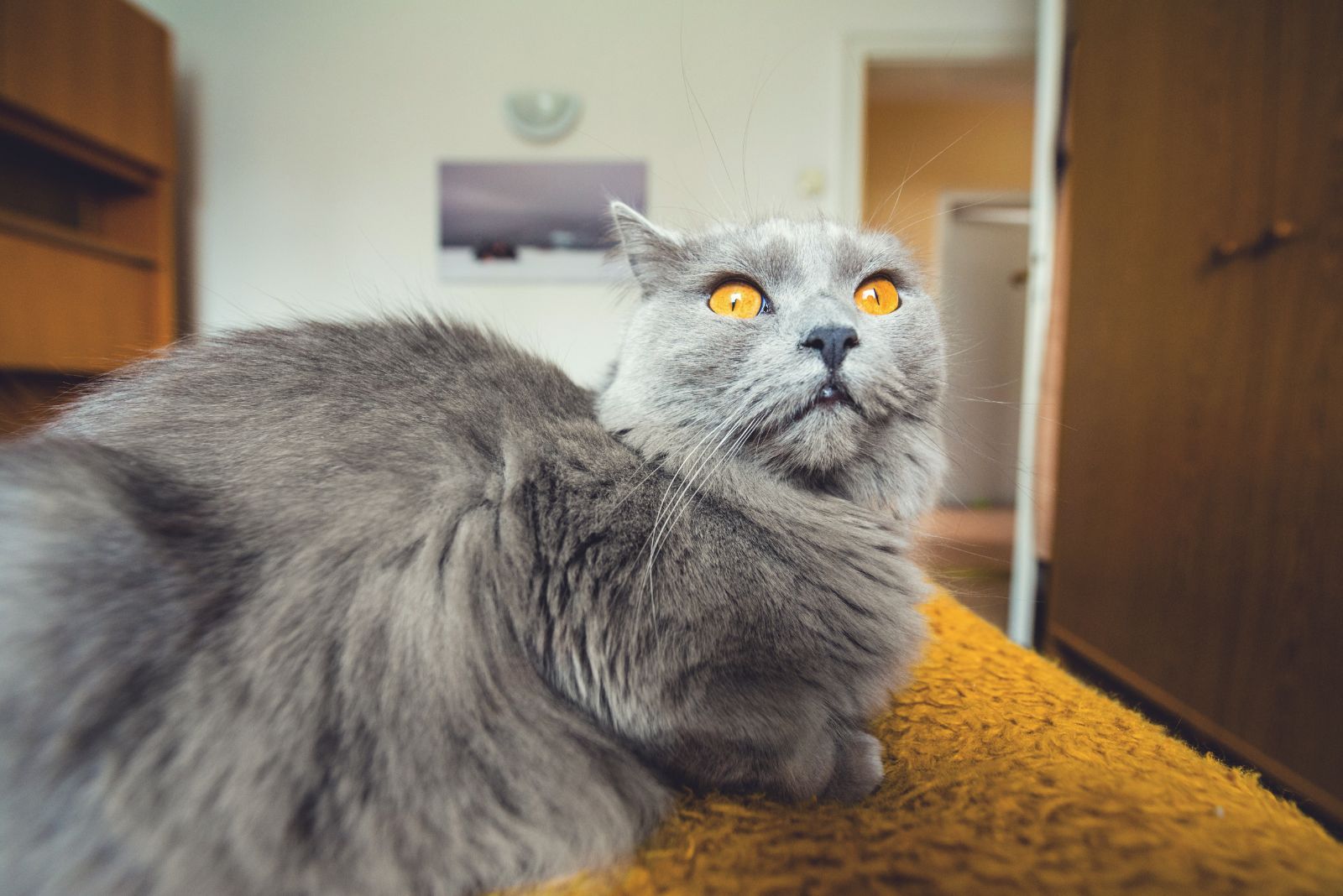
Cats who experience trauma are more likely to avoid things, places, or even people that remind them of the traumatic event. This behavior is their way of protecting themselves and minimizing the chance of encountering danger again.
By avoiding certain situations or triggers, they hope to shield themselves from experiencing further harm. For example, if a cat has had a bad experience with a litter box, such as pain or stress related to it, she may avoid using it altogether.
Similarly, if a cat has been near a car accident or has had a negative experience with a car, it’s highly likely that she will avoid cars in the future as a form of self-preservation.
This behavior extends to people as well. A traumatized cat may avoid individuals who have harmed her or, in some cases, refuse to interact with unfamiliar people at all.
This avoidance is her way of feeling safe and in control of her environment, ensuring that she doesn’t face the same trauma again. Understanding these behaviors can help us better support our cats as they recover and learn to trust again.
16. Excessive Grooming

Excessive grooming, also known as overgrooming, is a common sign of trauma in cats. When stressed or anxious, a cat may groom itself as a way to self-soothe.
While grooming is normal, it can become excessive in traumatized cats, leading to bald patches or skin irritation. This behavior is often a way for the cat to regain control in an overwhelming situation or a response to past trauma, where the cat feels unsafe or unclean.
Traumatized cats may groom excessively because it provides comfort in a stressful environment. This can become a cycle, where the more the cat grooms, the more anxious it feels, leading to even more grooming.
Over time, this can cause harm to the cat’s skin, making it more vulnerable to infections or sores.
To help your cat, create a calm and safe environment. Offering distractions like interactive toys can help redirect her attention from grooming. It’s also important to monitor her grooming habits regularly.
If the behavior continues or worsens, consult with a veterinarian to rule out any underlying health issues and seek advice on managing her stress levels.
17. Sudden Startle Responses

Sudden startle responses are common in cats experiencing trauma. These cats are often hyper-alert and easily startled by unexpected noises or movements.
The response might include jumping, running away, or hiding when they hear a loud noise or encounter something unfamiliar, such as a person or object.
This heightened sensitivity happens because the cat’s nervous system is in overdrive, always on the lookout for potential threats. It is particularly common in cats that have experienced loud noises, physical abuse, or unsafe environments in the past.
To help your cat feel more secure, create a calm and predictable environment at home. Try to reduce sudden movements or noises that might trigger her anxiety.
Reassuring your cat with soft words and gentle touch can also provide comfort. With patience and consistent care, your cat can start feeling safer and less reactive over time.
Possible Causes Of Traumatized Cats

Possible causes of trauma in cats often stem from bad experiences they’ve endured in the past. These events can leave lasting emotional scars and affect their behavior. Some common causes of traumatized cats include:
• Abuse: Physical harm or mistreatment, whether intentional or not, can deeply impact a cat’s mental health.
• Fighting with another cat or animal: Conflicts with other animals, especially if they involve injury or fear, can result in lasting trauma.
• Being trapped or escaping a trap: Cats that have been confined in cages or traps may associate these experiences with fear and distress.
• Car accidents: A traumatic incident like being hit by a car can leave a cat wary of roads and vehicles, along with deep emotional scars.
• Bad experience with a veterinarian: Pain or fear during a vet visit can cause a cat to be afraid of medical environments and people in white coats.
• Injury and illness: Serious injuries or prolonged illness can trigger feelings of helplessness or vulnerability in a cat.
• Neglect: Cats that have been left alone or without adequate care may develop anxiety, fear, and a sense of insecurity from the lack of attention and affection.
How To Deal With Post Traumatic Stress Disorder In Cats?

To reduce trauma responses in cats, create a calm environment and provide a safe space. With a vet’s approval, you can also use supplements, medications, or pheromone and essential oil diffusers to help reduce stress.
Provide your cat with sunlit perches and give her plenty of cuddles. Keep an eye on her behavior to address any issues quickly and catch potential health problems early.
So, here are some of the best methods for dealing with PTSD:
Desensitization
This method is one of the key techniques used by an animal behaviorist. The process of desensitization involves your cat facing the stressors that caused the trauma. This method requires careful exposure to be carried out in a calm place. Your cat’s fear will reduce after some time, she will realize that there are no bad consequences.
Counter-conditioning
This process is also helpful if you want your cat to stop being afraid of something. It also involves facing your cat with things that caused the trauma, but this time you need to reward your cat every time she faces her trauma successfully. Eventually, the cat will understand it as something positive.
Cat’s Recovery Process After Trauma

A cat’s recovery process after trauma depends on both you and your cat and also on the type of trauma they have experienced. If it wasn’t an extremely bad experience, your cat may easily recover.
However, when we’re talking about serious trauma, it will take more time and patience for your cat to recover.
Of course, your feline can’t recover fully by herself. She needs your help and sometimes you’ll also need an expert to help you with it.
Can A Cat Forget About Trauma?
Cats will never forget about the traumatic experience unless you work hard to help your feline recover!
Do Cats Remember Traumatic Events?
Yes, cats can remember traumatic events. They may become a part of their long-term memory, and that is why they may avoid people, things, or places that remind them of the traumatic experience.
How Long Does A Cat Trauma Last?
It all depends on the cat and how bad the experience was. Usually, if the experience wasn’t so bad, the trauma may only last a few weeks. In worse cases, it may last longer.
How Long Do Cats Remember Trauma?
Cats may remember trauma for many years. Sometimes, they may stop showing the symptoms of the trauma, but that doesn’t mean they have forgotten all about it. You can try using behavioral therapy in order to make your cat forget about the trauma earlier.
All In All

A cat’s recovery process after trauma may be complicated and long if you don’t help your feline. You can always ask for advice from your vet or other experts, such as animal behaviorists.
Ensure you react on time if you notice any of these symptoms because your cat friend is so important to you and nobody wants their pet to suffer from fear or anxiety.

